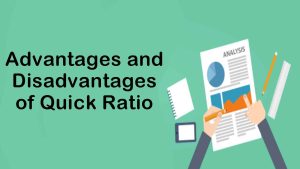Return on Capital Employed – All businesses focus on ensuring that they give greater returns to their investors by utilizing their total capital, resulting in higher profits and returns. Furthermore, to evaluate how well the business is spending its total capital, the return on capital employed should be determined. This is referred to as the return on capital employed ratio.
Return on capital employed is among the few financial ratios that an investor looks at to consider a business’s rate of return and profitability. ROCE is a financial ratio which can be applied to determine the viability and capital productivity of a business. ROCE provides insight into how effectively a business uses its overall resources to earn income.
Return on Capital Employed is a profitability ratio which explains how much income is produced from using each rupee of total capital employed. It demonstrates how well a firm can earn income from the money invested in its business activities
It is a long-term sustainability ratio utilized to assess a business’s longevity by taking into account the efficiency of its properties as well as the business’s long-term funding.

Formula For Return on Capital Employed
ROCE = EBIT/ Total assets – Current Liabilities(Capital employed)
Must read – How to calculate Return on Capital Employed?
Earnings before taxes and interest (EBIT).
EBIT, also recognized as net operating income, is a measure about how much a business earns from its profits before deducting expenses like taxes and interest. It is shown in the business’s profit and loss statement as the income earned before any expense deductions. Earnings before Interests and Taxes (EBIT) can be determined by deducting the COGS and operating expenses from revenues or, if necessary, by adding the interest & taxes on the net income.
Capital employed
The total capital employed denotes the total amount of capital used in corporate activities, that contains shareholders’ equity as well as the firm’s assets. Some researchers measure that by subtracting current liabilities from total assets. The most popular derivation process is to apply equity capital to the firm’s debt capital.
What does Return on Capital Employed indicate?
A greater EBIT relative to total capital employed will lead to higher Return on Capital Employed (ROCE) ratio, meaning that the total assets or capital employed in business activities produce higher returns for the firm, implying better financial performance.
However, if the denominator, i.e., total capital employed, is greater than that of the EBIT, the ROCE ratio would be lower. This usually indicates that the organization is not utilizing its money to the best use possible, and there is room for change or even failure.
The ROCE ratio indicates how much revenue is produced per rupee of employed capital. A higher ratio is preferable as it indicates that more revenues is produced per rupee of capital employed.



